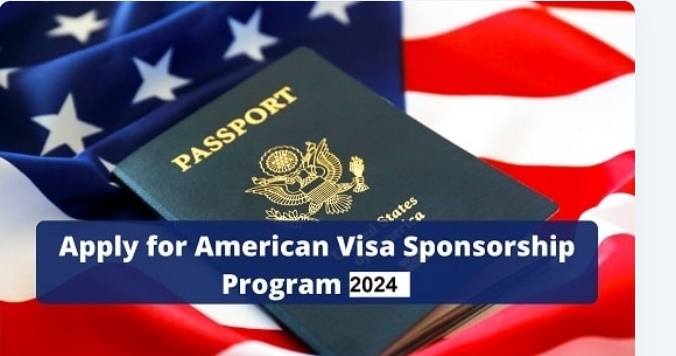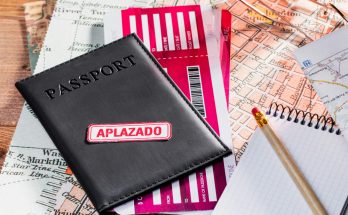The United States has long been a beacon of opportunity for individuals around the world, offering a diverse range of educational, professional, and cultural experiences. Whether you’re a student aspiring to study at a prestigious American university or a professional seeking career opportunities in the land of endless possibilities, understanding the intricacies of US visa requirements and sponsorship is crucial. In this comprehensive guide, we’ll explore the various visa options available for individuals wishing to travel to the US, as well as the concept of sponsorship and how it plays a pivotal role in the immigration process.
Understanding US Visa Options
The US offers a multitude of visa categories, each tailored to specific purposes such as tourism, business, education, employment, and family reunification. Some of the most common visa types include:
- Visitor Visas (B1/B2): These visas are for individuals traveling to the US for tourism, business, or medical treatment on a temporary basis.
- Student Visas (F-1/M-1): Designed for individuals pursuing academic or vocational studies at accredited institutions in the US.
- Work Visas (H-1B, L-1, O-1, etc.): Various work visas are available for professionals with specialized skills, executives/managers transferring within multinational companies, individuals with extraordinary abilities, and more.
- Family-based Visas (CR-1/IR-1, K-1, etc.): These visas enable US citizens and lawful permanent residents to bring their foreign-born spouses, children, parents, or fiancés to live with them in the US.
- Immigrant Visas (EB-1, EB-2, EB-3, etc.): These visas are for individuals seeking to immigrate to the US permanently based on employment, investment, family sponsorship, or refugee/asylee status.
Each visa category has its own eligibility criteria, application process, and documentation requirements, so it’s essential to choose the one that aligns with your specific circumstances and intentions for traveling to the US.
Sponsorship in the US Immigration Process: Sponsorship plays a crucial role in many US visa applications, particularly for immigrant visas and certain types of work visas. A sponsor is typically a US citizen, lawful permanent resident (green card holder), or US-based employer who agrees to financially support and take legal responsibility for the visa applicant during their stay in the US. Here’s how sponsorship works in different contexts:
- Family Sponsorship: US citizens and lawful permanent residents can sponsor certain family members for immigrant visas, allowing them to live and work in the US permanently. The sponsor must demonstrate their relationship to the applicant and meet specific financial requirements to support them.
- Employment Sponsorship: Many work visas in the US require sponsorship from a US employer. For example, the H-1B visa, which is popular among skilled workers in specialty occupations, requires an employer to petition on behalf of the applicant and demonstrate the need for their skills.
- Financial Sponsorship for Students: International students applying for F-1 or M-1 student visas must demonstrate that they have sufficient funds to cover their tuition fees, living expenses, and other costs while studying in the US. This often involves providing financial documentation, such as bank statements or scholarship letters, to prove financial capability. In some cases, students may also be sponsored by a government, organization, or educational institution.
- Affidavit of Support: For certain immigrant visa categories, such as family-based or employment-based visas, sponsors may be required to submit an Affidavit of Support (Form I-864). This legally binding document demonstrates the sponsor’s ability to financially support the immigrant and prevents them from becoming a public charge in the US.
Application Process and Documentation
The application process for US visas can vary depending on the visa category and the applicant’s individual circumstances. However, some general steps and documentation requirements apply across most visa applications:
- Complete the Online Visa Application: Start by filling out the appropriate visa application form on the US Department of State’s website (DS-160 for nonimmigrant visas, DS-260 for immigrant visas).
- Pay the Application Fee: Most visa applications require payment of a non-refundable application fee, which can vary depending on the visa type.
- Schedule and Attend Visa Interview (if required): Depending on the visa category and the applicant’s nationality, a visa interview at a US embassy or consulate may be required. During the interview, applicants will be asked questions about their background, purpose of travel, and ties to their home country.
- Submit Supporting Documents: Applicants must provide supporting documents to demonstrate their eligibility for the visa, which may include passport, visa photos, financial statements, proof of ties to home country, letters of support or sponsorship, and any other required documentation specific to the visa category.
- Biometrics Appointment: Some visa applicants may be required to attend a biometrics appointment to provide fingerprints and a photograph as part of the security clearance process.
- Wait for Visa Processing: After submitting the application and attending any necessary appointments, applicants must wait for their visa to be processed. Processing times can vary depending on the visa category, time of year, and other factors.
Conclusion: Navigating the US visa process can be complex and challenging, but with the right information and preparation, it’s entirely achievable. Whether you’re planning to study, work, reunite with family, or pursue other opportunities in the US, understanding the visa requirements and sponsorship options is the first step toward realizing your goals. By familiarizing yourself with the different visa categories, gathering the necessary documentation, and seeking assistance from immigration professionals when needed, you can navigate the path to the United States with confidence and clarity.


